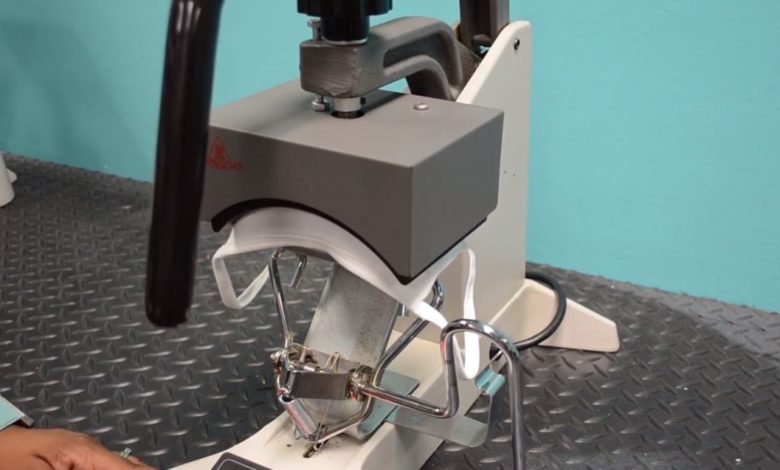
The majority of reusable/washable face masks in the market during this pandemic are cotton, polyester, or cotton/polyester blends. When you are dealing with polyester or poly blends, consider the possibility of dye migration occurring. If you are not familiar with this subject, dye migration occurs when the dye from the substrate you apply the transfer to sublimates through the transfer. For example, I printed a white transfer on a red polyester garment, and the transfer turned pink. Most transfer manufacturers offer products that block the dye from migrating, whether you are fusing a screen printed transfer or a heat transfer vinyl.
You can separate face masks into two categories for heat press application by asking these questions:
- Will the mask lay completely flat when put on the bottom platen of the heat press? OR
- Will you have to fold the mask in half for application due to seams or the way the mask contours to the face?
The easiest way to apply a transfer to a mask is when you can lay it completely flat on the lower platen of your heat press. The main thing to consider is the seams around the perimeter of the mask. Are they going to be higher than the application location? If so, one way to remedy this situation is to add more pressure (test before production). Another way is to level it out with thin (1/4 inch thick) silicone pad insert and place it under the mask for fusion. You will need to cut the insert to fit in between the perimeter seams underneath the mask. This insert brings the area for application up to the same level as the seams. You don’t have to use a silicone pad; an average mouse pad should suffice.
When applying a transfer to a mask with a middle seam or one that won’t lay flat under a heat press, follow the same steps but instead of positioning the mask flat, fold it in half.
Additional Application Tips:
- Try using a cap press for masks that are not able to easily lay flat on the lower platen of your average flat heat press.
- Apply multiple masks in one application to save production time.
- For masks with heat-sensitive straps, use a Teflon sheet or cover sheet over the mask/transfer to protect the straps and avoid melting. Add a few seconds to dwell time when covering.
- When designing a graphic for a face mask, try to take advantage of negative space or placement other than right over your mouth. It’s hard to breathe through a mask with a solid image blocking airflow.
- Choose a transfer that will be comfortable when wearing a mask—something thin, with good stretch and adhesion.



